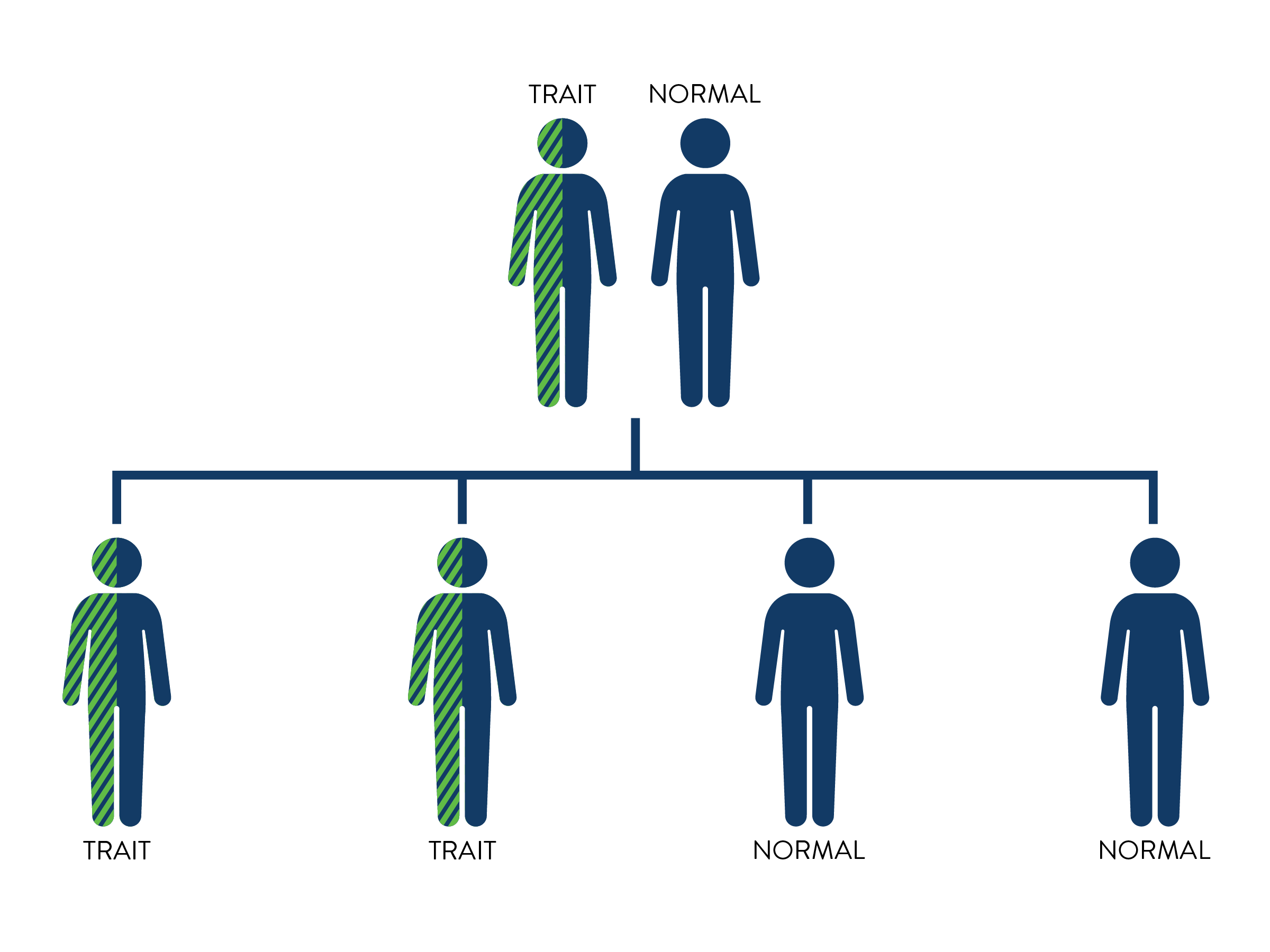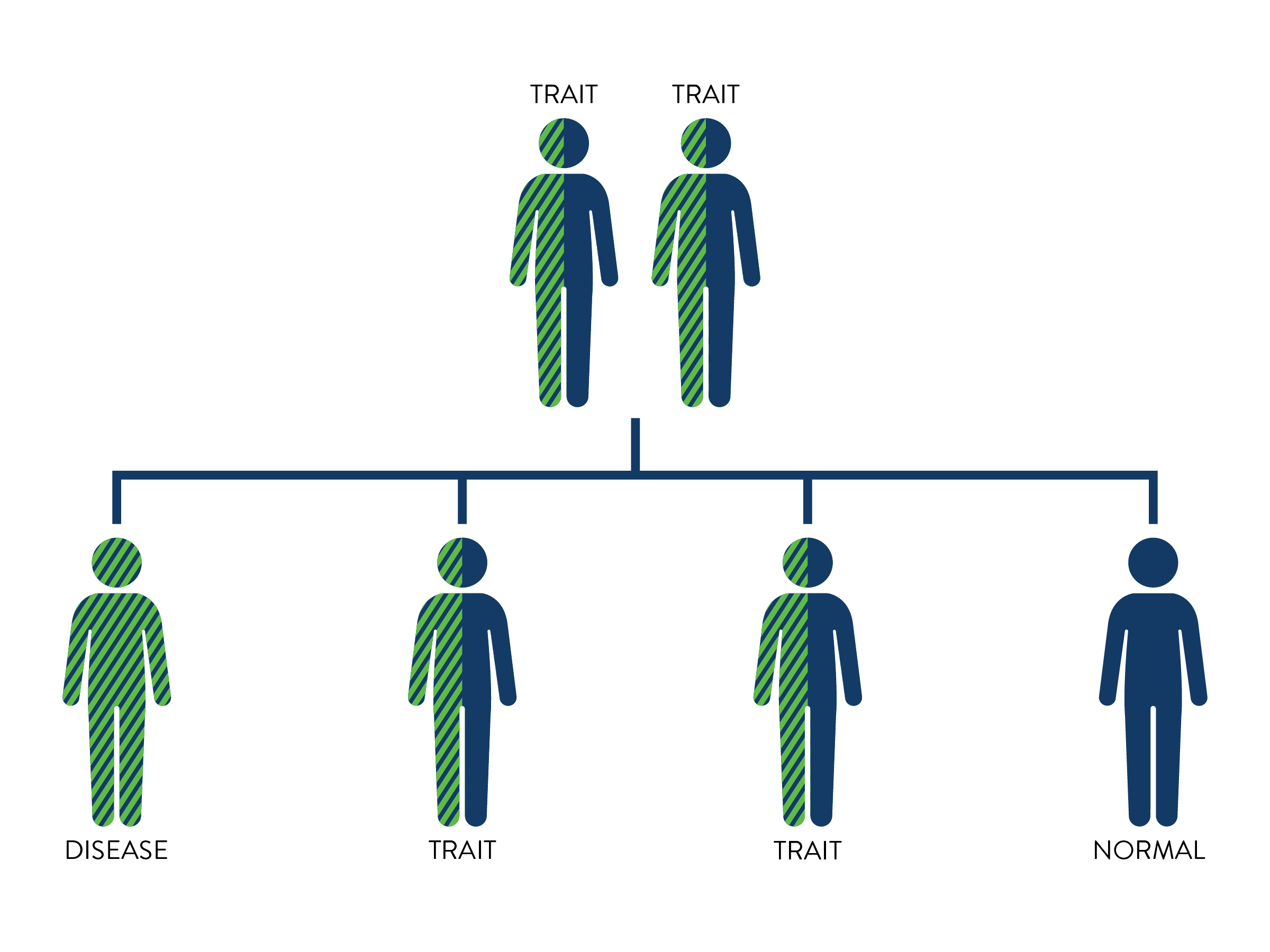Contact Info
About Sickle Cell Disease
On this page
What is sickle cell disease?
Causes
Diagnosis and treatment
Supporting individuals with sickle cell disease
Sickle cell disease in newborns
Specialty clinics
What is sickle cell disease?
Sickle cell disease (SCD) is a group of conditions that affect the red blood cells. Normal red blood cells are round and flexible. A person with sickle cell disease has red blood cells that are hard, sticky, and crescent-shaped like crescent moons or sickles. People with sickle cell disease often experience intense pain and anemia because of their abnormal red blood cells.
SCD is one of the most common hereditary disorders in the United States, affecting 1 in 1,900 infants. Of the 66,000 infants born in Minnesota annually, about 25 infants are born with SCD and more than 1,000 infants are born with a sickle cell trait (SCT).
Individuals with SCD face adverse health outcomes such as a reduced life expectancy. SCD primarily, although not exclusively, affects African Americans and other Black populations. Approximately 1 out every 12 African Americans has SCT, while SCD occurs among 1 out of every 365 African American births. Historically, this group has experienced numerous health disparities and unfortunately still does to this day. SCD also occurs in about 1 in every 16,300 Hispanic-American births. SCD is most common in individuals who come from and whose ancestors are from Africa, India, South America, Saudi Arabia, and Mediterranean countries such as Turkey, Greece, and Italy.
The Many Faces of Sickle Cell Disease
Causes
SCD is a genetic condition that is passed on to a child from their parents. SCD is a recessive condition, meaning people who have SCD inherit the sickle cell gene from both their mother and father.
SCD is not an infectious disease, and cannot be passed from one person to another, except by birth.
Sickle cell trait
A person who inherits the sickle cell gene from only one parent has the sickle cell trait (SCT) and usually will not have the symptoms of sickle cell disease. However, they may pass this gene onto future children. If both parents have SCT, it is more likely that their children may have SCD.
If one parent has SCT, there is a 50% chance of having a baby with SCT.

If both parents have SCT, there is a 25% chance of having a baby with sickle cell disease (SCD) and 50% chance of having a baby that has sickle cell trait (SCT).

Types
There are several types of SCD including hemoglobin SS, hemoglobin SC and hemoglobin S-beta thalassemia. The most common type of SCD is hemoglobin SS. The different types of SCD have some unique symptoms and some in common.
Diagnosis and treatment
Sickle cell disease is usually diagnosed at birth through a blood spot test, which is part of the Newborn Screening Program. A blood test can also be performed at any time for those not screened at birth.
Treatment can help relieve symptoms and complications of SCD, which vary and can range from mild to severe. Treatment will be different for each person based on what symptoms they have. The goals of treating SCD are to prevent and relieve SCD complications, including pain, infections, organ damage, and strokes. Treatments can include:
- Receiving blood transfusions
- Drinking lots of water (8 to 10 glasses of water each day)
- Receiving IV (intravenous) therapy (fluids given into a vein)
- Taking pain relievers
- Taking an FDA-approved medication, such as hydroxyurea, crizalizumah, L-glutamine, or voxeletor
A blood or marrow transplant is a procedure that takes healthy stem cells from a donor and puts them into someone else. These healthy stem cells cause the bone marrow to make new cells that are not in the sickle shape. Many people do well after a BMT and experience significant improvement in their quality of life. However, there are risks associated with transplants. Discuss eligibility for transplant and associated risks and benefits with a transplant doctor.
Researchers are studying a new potential cure through gene therapy. Right now, gene therapy is only available in clinical trials.
Supporting individuals with sickle cell disease
If you would like to participate in efforts to learn more about SCD, visit
Blood and marrow donation
Blood transfusions are an effective treatment to help those with SCD. Donating blood can help save lives. Diverse donors are needed.
Learn more:
- Red Cross Blood Services: African American Blood Donors
- Red Cross: Join the Fight Against Sickle Cell Disease
- Memorial Blood Centers: Sickle Cell Donor Program
People with SCD who are eligible for a blood and marrow transplant may match with a healthy sibling donor. Donors may also be found through the national Be The Match Registry. Consider joining. Diverse donors are needed.
Support and services
- National Institute of Health Clinical Trials
- NMDP: Clinical Trials Search and Support
- MDH: Children and Youth with Special Health Needs
- National Heart, Lung, and Blood Institute Clinical Trials: Sickle Cell Disease
- Sickle Treatment & Outcomes Research in the Midwest (STORM)
Sickle cell disease in newborns
- Health Resources & Services Administration Newborn Screening: Hemoglobin Trait/Carrier
- MDH: Newborn Screening Information for Families: Hemoglobin and Sickle Cell Trait
- MDH: Newborn Screening Materials: Sickle Cell Disease
- MinneStories: Fierce Advocate
Specialty clinics
- Children's Minnesota: Hemoglobinopathy and Sickle Cell Disease
- M Health: Sickle Cell Disease
- Mayo Clinic: Pediatric Hematology/Oncology
- Hennepin Healthcare: Sickle Cell Program